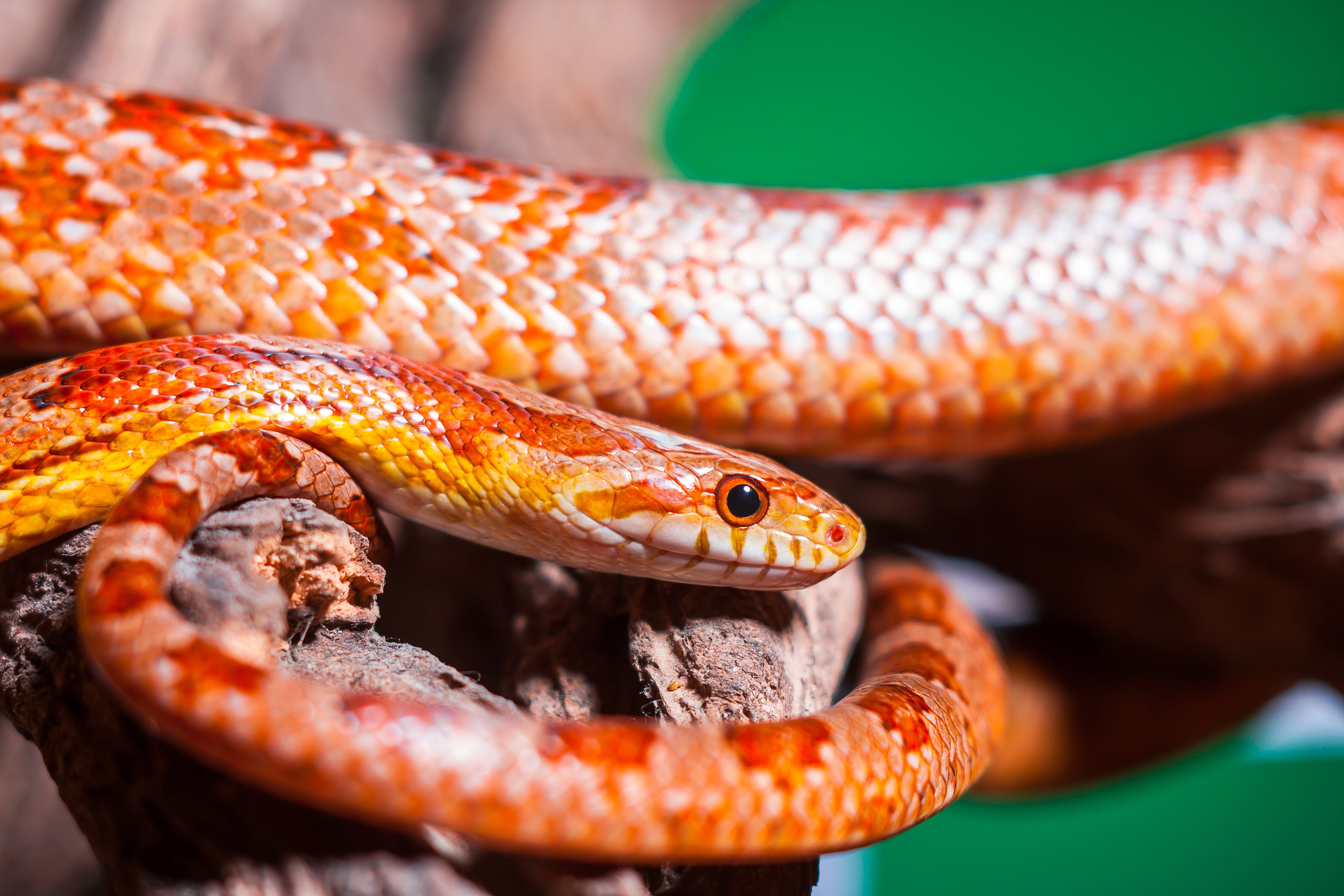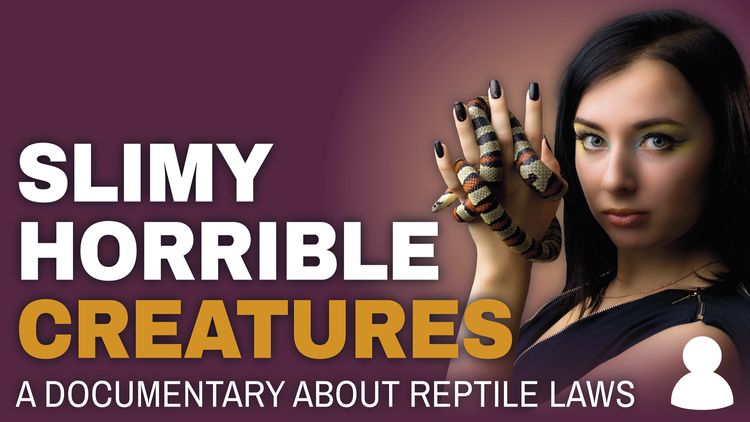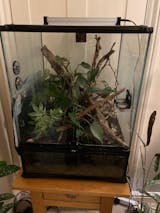Corn Snake Care Sheet
About
Our Corn Snake care sheet has all the expert guidance you need to ensure you can effectively look after your Corn Snake.
The corn snake (Pantherophis guttatus)is one the most popular reptiles kept in captivity, they are relatively easy to care for, can have calm temperament and although they can reach 6ft in length, they are quite a slender snake so are easily housed and handled.
In the wild they are a mottled orange, red and black colour but several generations of selective breeding have created hundreds of different colours and patterns (morphs), which has made them extremely popular pet keepers, collectors and breeders too.
They can live for as long as 20 years in captivity so a commitment to their long-term care is important when deciding to own this reptile.
Housing
Corn snakes are best kept in a good quality, sealed, wooden vivarium which helps to ensure heat can be maintained correctly whilst also offering a good level of security.
As hatchlings are tiny and grow relatively slowly, taking 2-3 years to reach adulthood, it is often easier and more secure to house a baby snake in a hatchling setup and provide larger accommodation as it grows.
The number of enclosures you will need can be kept to a minimum with a little more investment at the outset, ideally an enclosure that can securely house a hatchling until around 18 months is the best starting point. A 2ft enclosure is a great starting point for this and the monkfield 24inch terrainum is a popular choice.
Once your corn snake is ready for a bigger home it can be moved straight into its adult home, just be sure to add lots of secure hiding areas for a smaller snake to feed sucure in a large environment. We would recommend a 120x60x60cm enclosure to provide ample room for an adult corn snake but have seen some fantastic enclosures that are even larger.
Corn snakes prefer to live alone, only ever coming into contact with others for short periods during breeding season. We would advise against housing more than one snake per enclosure.
Heating
Corn snakes should be provided with a warm area of the enclosure that is approximately 30-32C. An ambient temperature range of 24-28C throughout the rest of the enclosure will help create a suitable thermogradient. Ideally night time temps should not dip below 18C.
For smaller snakes a heat mat and thermostat is a popular choice, they fit perfectly in the specially made slot of a terrainium and the temps are then monitored using a digital thermometer. This is very simple and effective, but care needs to be taken to ensure that ambient (air) temperature is sufficient as heats mats do very little to warm the air.
For larger snakes and in any vivarium setup, ceramic heaters do a good job of providing warmth throughout the enclosure. Always protect with a heating guard as these types of heaters will immediately burn the snake on contact, and control the temperature with a pulse or dimming thermostat.
More recently the use of an Arcadia Deep Heat Projector, controlled by a thermostat, has grown in popularity. The benefit of this type of heater is that it provides a deep, tissue penetrating heat (Infra-Red B) which will also warm decoration below, which in turn gives off more heat in the enclosure. Providing heat from above can also help avoid accidental burns or over heating which can be risks when using a heat mat, especially if burying under a layer of substrate.
Lighting
As with almost all animals, it has been shown that access to UV lighting is beneficial to corn snakes. A UV Index of around 1-2 as well as fully shaded areas will ensure that the snake can access to the UVB light that it needs for healthy development. For smaller enclosures an Arcadia Shade Dweller ProT5 light will provide this UVI when installed at a height of 25-40cm. If you use a terrainium, you may prefer the mini-uv kit as the less powerful reflector makes it suitable for distances of around 15-20cm
For larger enclosures of a similar height a reflected arcadia 6% T8 tube will produce a similar output. Or if you have 40-45cm to work with use a 6% T5 or ProT5 kit.
Keep the light on for approximately 12-14 hours per day and turn off at night time.
Humidity
Corn snakes come from areas of relatively low humidity so a dry setup will help maintain this. You can monitor humidity in the cold end of the vivarium if desired but provided you have a warm, well ventilated vivarium there are unlikely to be issues in most UK households.
A higher humidity hide (wet box) is also beneficial and you will find that many baby corn snakes will spend a lot of time in these should they have access to them.
Decoration
Decorating a vivarium is much more than simply making your enclosure look visually appealing, whilst there are endless products that will do just that and this can be very rewarding, decoration is also very functional and will help you provide an environment that helps make your corn snake feel safe and secure.
You should always maintain a hide on both the warm side and the cool side of the vivarium.
Rocks, resin decoration, branches and plastic plants all make great climbing and hiding areas and will be utilised by corn snakes, which are surprising active especially during the night.
Food
Corn snakes should be fed on appropriately sized, defrosted mice or rats. See our separate snake feeding guide for further information
Water
Fresh drinking water should be available at all times in a shallow bowl and changed daily.
Cleaning and Hygiene
Spot clean the enclosure daily removing any waste matter to help keep the enclosure clean at all times. Complete a full vivarium clean every 4-6 weeks replacing all substrate, clean and disinfect the enclosure and decoration where it is safe to do so.
Just like cats, dogs or other pets; reptiles can carry bacteria (including salmonella), worms or parasites. To prevent the spread of infection between yourself and the animal or even between different animals in your care, you should always wash your hands thoroughly before and after cleaning or handling.
It is also prudent to carry out a faecal check annually or at any time should there be a cause for concern, e.g. you notice runny stools. See https://www.palsvetlab.co.ukfor further details.
Your responsibilities
Our corn snake care sheet is designed to offer a basic overview and instant reference point to many of the most common questions related to care and setups. There is often more than one method to achieve the same results and they should be read in conjunction with other research, professional advice and subsequent developments in knowledge and research.
As a pet owner you are legally responsible to ensure that any animal under your care is properly cared for, your obligations are to provide:
- Freedom from hunger or thirstby ready access to fresh water and a diet to maintain full health and vigour
- Freedom from discomfortby providing an appropriate environment including shelter and a comfortable resting area
- Freedom from pain, injury or diseaseby prevention or rapid diagnosis and treatment
- Freedom to express (most) normal behaviourby providing sufficient space, proper facilities and company of the animal's own kind
- Freedom from fear and distressby ensuring conditions and treatment which avoid mental suffering
If in doubt always be sure to seek immediate professional and/or veterinary advice.
If you have other reptiles as pets, be sure to check out our other care sheets, including Bearded Dragon, Crested Gecko, Hognose Snake, Giant African Land Snail, Hermann's Tortoise & Leopard Gecko




